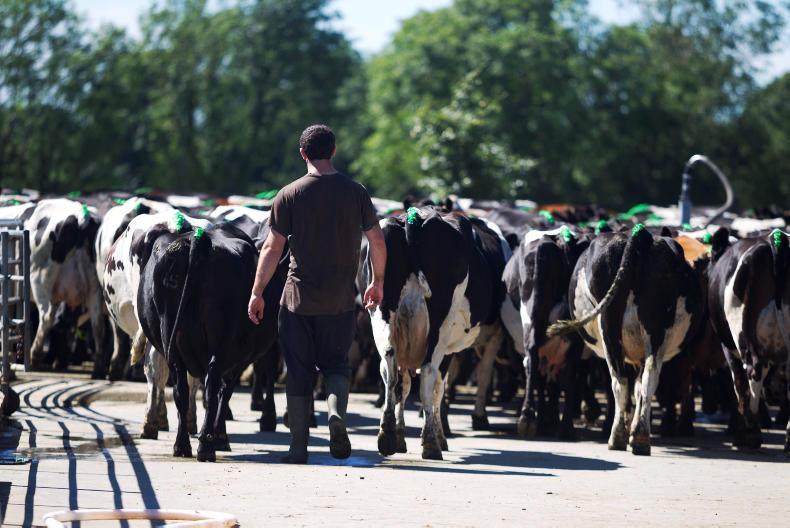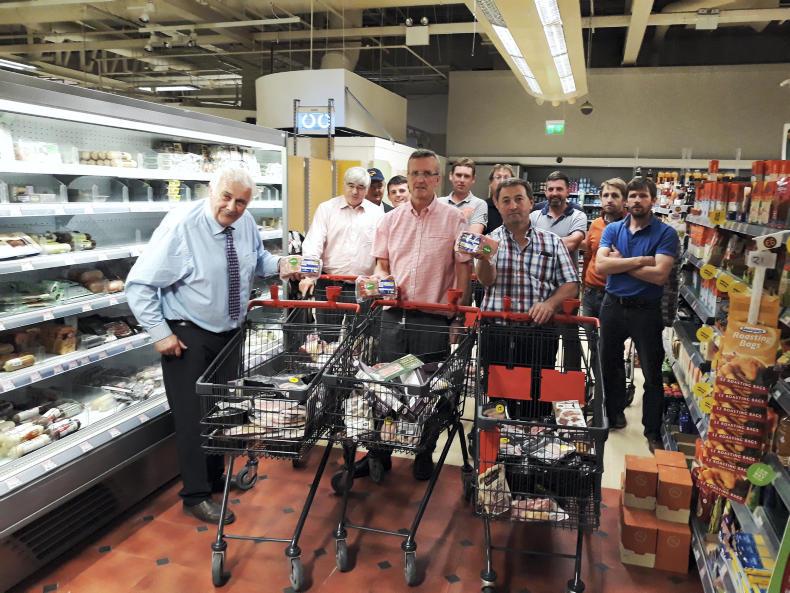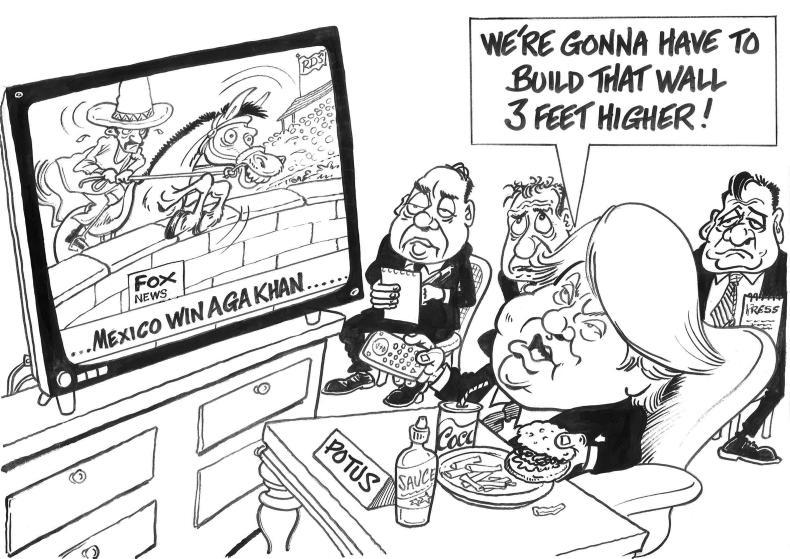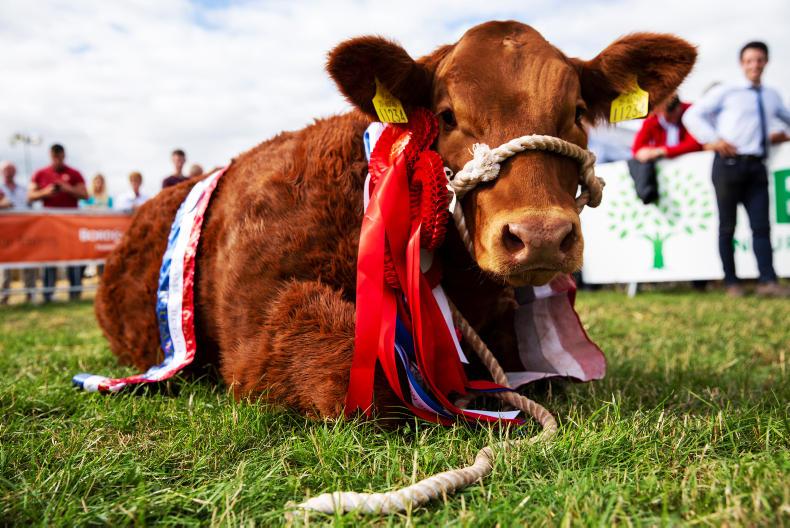Farmers need to question the logic of finishing cattle out of the shed this year. The risks will be higher, the margins tighter and the alternatives more financially attractive.
Winter finishing has always been a risky business requiring a high level of capital investment to deliver, even in a good year, a modest return. This year the odds are stacked even higher due to a combination of factors.
At farm level, higher feed prices will have an impact on margins and risk. Adam Woods calculates that to generate a €100 margin from a 550kg steer purchased this autumn and slaughtered out of the shed next spring, a farmer will require a beef price of €4.85/kg. Even in a more efficient bull beef system, the price required to obtain a €100 margin would be €4.60/kg, with the heifer system really coming under pressure, requiring €5/kg.
However, higher feed costs also present an opportunity to sell fodder off-farm or contract-feed stock for another farmer. While it seldom pays to sell fodder, this year is clearly different with silage trading at €30-€35 per bale or €40-€45/t.
So the conundrum facing a typical winter finisher with 1,000 tonnes of silage is do they cash in on the fodder worth €40,000 or do they invest a further €270,000 in purchasing stock and ration to try to make an additional €20,000 – in the hope that they are going to receive the record beef prices outlined earlier? To put into context, simply to break even and retain their €40,000, a beef price of €4.35-€4.60/kg will be required.
It is a high-risk gamble even in a normal year – and the year ahead is not going to follow normal trends.
The future of winter finishing depends on whether processors and retailers are prepared to share the risk with farmers
Alongside high costs, the other threat facing winter finishers this year is Brexit. At the top end of the risk register has to be a no-deal Brexit, where the UK reverts to WTO rules next March. Without support measures from the EU, this would decimate Irish cattle prices. While deadline extensions are being discussed, farmers would be foolish not to take heed of warnings from the EU and, more recently, the UK government to prepare for a no-deal Brexit.
Tariffs and border checks are only one side of the Brexit coin – the other being currency volatility. Given the political instability in the UK, no one can predict how negotiations will play out over the next eight months. It is this uncertainty that creates potential for currency shocks.
Every statement by a politician on either side of the negotiations has the potential to cause a shock that could seriously undermine the value of Irish beef going into the UK – and the price received by farmers.
Farmers should take no comfort from the fact that beef processors could hedge against currency – the reality is that their ability to quickly adjust the farmgate price is the best hedge processors have. Therefore, in the absence of any EU support measures, should we see euro-sterling parity, as some have predicted, it would be farmers taking the full impact – as was the case when the value of sterling collapsed in the immediate aftermath of the referendum in June 2016.
So, is winter finishing finished? Ultimately it depends on whether processors and retailers are prepared to share the risk with farmers who finish cattle. The recent statement by the NFU president that unless the UK can continue to import from the EU and elsewhere after Brexit, it would run out of food within three months of leaving the EU, should help focus the minds.
While the beef forum, chaired by Minister for Agriculture Michael Creed, has not met in recent months, farmers would expect that a strategy is being worked on in the background. If stakeholders want to maintain a year-round supply of beef, then winter finishers will need:
A guaranteed euro beef price that delivers an adequate margin.Increased flexibility on specs allowing for a shift to more efficient bull beef systems.The commitment to introduce the market management tools necessary to support farmgate prices in the wake of a no-deal Brexit or currency shock. There have been vague assurances of EU and national aid in the event of a no-deal Brexit but winter finishers now need solid commitments and a line of sight as to how these will operate. In the absence of the measures outlined above being introduced, it is hard to see how any farmer could justify finishing cattle this winter on the basis of economics or sound business sense. Ultimately, the decision will be taken at individual farm level – but the risk should not be ignored.
Tullamore Show: farmers show
resilience as fodder stays centre stage

This Limousin heifer calf, owned by the McPadden brothers, taking a well-earned break during the parade of champions after claiming the comercial calf champion title, the overall Limousin champion title and the Kepak beef animal of the future title at Tullamore show. \ Donal O' Leary
The 650 volunteers who come together every year to stage Tullamore Show can be very proud of what they achieved. The show is going from strength to strength with its new partner FBD. Alongside the quality of cattle on display, one of the standouts was the dedicated farm safety arena with excellent demonstrations.
Despite the weather challenges of the last six months, the mood among farmers was one of resilience. While winter fodder supplies are weighing heavily on minds, there is no doubt that the fact farmers are so alert to the problem early in the season will help to tackle the problem.
From discussions, it was evident that drought problems have been most severe along the east coast with farmers in the west, particularly those on heavy land, having a relatively good season. However, with their focus turning to the autumn weanling and store lamb trade, there are concerns that farmers in the east may not be as active in the weanling market due to tight fodder supplies.
We may be looking at a year where suckler farmers need to plan on carrying a percentage of their weanlings over the winter and targeting the spring grass market.
Greenfield farm: free land and labour

Milking time at Greenfield farm, Co Kilkenny
Matt Dempsey follows up on last week’s article from Jack Kennedy on the financial projections for the Greenfield farm. We also carry a letter relating to the article this week. As with other farms and projects with which the Irish Farmers journal is associated, we give a commitment to readers to report the facts and true costs in an open and transparent fashion. It is in the hope that farmers can learn from rather than replicate mistakes as well as successes.
The fact that the Greenfield farm is projected to make a loss after all costs of €150,000 in 2018 demonstrates just how dependent the EU food production models is, even in the case of our most profitable enterprise, on farmers effectively contributing the two most valuable assets free of charge: land and labour. It should be noted that the farm has an annual labour charge in the region of €100,000, land rent at a minimum of €53,000, bank repayment of €80,000 (in interest) and no basic payment.
Labelling: Bord Bia logo the property of Irish farmers

Pig farmers and IFA pig committee chair Tom Hogan and IFA treasurer Tim Cullinan protesting in SuperValu, Castletroy.
On page 13, Hannah Quinn-Mulligan reports on protests by pig farmers in supermarkets highlighting low prices and cheap imports. Once again, we see retailers displaying Irish product with the Bord Bia logo alongside cheaper imported product. The only way such practices, which are clearly confusing the consumer, will be avoided is if stricter requirements are placed on retailers using the Bord Bia logo, which ultimately is the property of Irish farmers. Retailers should not be allowed to ride two horses.
Glyphosate: keeping the focus on scientific research
Glyphosate is back in the headlines this week after a California judge ordered Monsanto to pay $298m in damages to a groundskeeper.
It followed the decision by a jury that the company should have warned users about the dangers of its Roundup weedkillers.
The ruling, which is to be appealed, has reignited the debate on the safety of glyphosate. It is important that future policy decisions on the issue are based on science and not distracted by emotion.
Read more
Dempsey at Large: €150,000 cash loss with 300 cows
Greenfield digs into cash reserves
Winter Finishing: Is it Game Over
Farmers need to question the logic of finishing cattle out of the shed this year. The risks will be higher, the margins tighter and the alternatives more financially attractive.
Winter finishing has always been a risky business requiring a high level of capital investment to deliver, even in a good year, a modest return. This year the odds are stacked even higher due to a combination of factors.
At farm level, higher feed prices will have an impact on margins and risk. Adam Woods calculates that to generate a €100 margin from a 550kg steer purchased this autumn and slaughtered out of the shed next spring, a farmer will require a beef price of €4.85/kg. Even in a more efficient bull beef system, the price required to obtain a €100 margin would be €4.60/kg, with the heifer system really coming under pressure, requiring €5/kg.
However, higher feed costs also present an opportunity to sell fodder off-farm or contract-feed stock for another farmer. While it seldom pays to sell fodder, this year is clearly different with silage trading at €30-€35 per bale or €40-€45/t.
So the conundrum facing a typical winter finisher with 1,000 tonnes of silage is do they cash in on the fodder worth €40,000 or do they invest a further €270,000 in purchasing stock and ration to try to make an additional €20,000 – in the hope that they are going to receive the record beef prices outlined earlier? To put into context, simply to break even and retain their €40,000, a beef price of €4.35-€4.60/kg will be required.
It is a high-risk gamble even in a normal year – and the year ahead is not going to follow normal trends.
The future of winter finishing depends on whether processors and retailers are prepared to share the risk with farmers
Alongside high costs, the other threat facing winter finishers this year is Brexit. At the top end of the risk register has to be a no-deal Brexit, where the UK reverts to WTO rules next March. Without support measures from the EU, this would decimate Irish cattle prices. While deadline extensions are being discussed, farmers would be foolish not to take heed of warnings from the EU and, more recently, the UK government to prepare for a no-deal Brexit.
Tariffs and border checks are only one side of the Brexit coin – the other being currency volatility. Given the political instability in the UK, no one can predict how negotiations will play out over the next eight months. It is this uncertainty that creates potential for currency shocks.
Every statement by a politician on either side of the negotiations has the potential to cause a shock that could seriously undermine the value of Irish beef going into the UK – and the price received by farmers.
Farmers should take no comfort from the fact that beef processors could hedge against currency – the reality is that their ability to quickly adjust the farmgate price is the best hedge processors have. Therefore, in the absence of any EU support measures, should we see euro-sterling parity, as some have predicted, it would be farmers taking the full impact – as was the case when the value of sterling collapsed in the immediate aftermath of the referendum in June 2016.
So, is winter finishing finished? Ultimately it depends on whether processors and retailers are prepared to share the risk with farmers who finish cattle. The recent statement by the NFU president that unless the UK can continue to import from the EU and elsewhere after Brexit, it would run out of food within three months of leaving the EU, should help focus the minds.
While the beef forum, chaired by Minister for Agriculture Michael Creed, has not met in recent months, farmers would expect that a strategy is being worked on in the background. If stakeholders want to maintain a year-round supply of beef, then winter finishers will need:
A guaranteed euro beef price that delivers an adequate margin.Increased flexibility on specs allowing for a shift to more efficient bull beef systems.The commitment to introduce the market management tools necessary to support farmgate prices in the wake of a no-deal Brexit or currency shock. There have been vague assurances of EU and national aid in the event of a no-deal Brexit but winter finishers now need solid commitments and a line of sight as to how these will operate. In the absence of the measures outlined above being introduced, it is hard to see how any farmer could justify finishing cattle this winter on the basis of economics or sound business sense. Ultimately, the decision will be taken at individual farm level – but the risk should not be ignored.
Tullamore Show: farmers show
resilience as fodder stays centre stage

This Limousin heifer calf, owned by the McPadden brothers, taking a well-earned break during the parade of champions after claiming the comercial calf champion title, the overall Limousin champion title and the Kepak beef animal of the future title at Tullamore show. \ Donal O' Leary
The 650 volunteers who come together every year to stage Tullamore Show can be very proud of what they achieved. The show is going from strength to strength with its new partner FBD. Alongside the quality of cattle on display, one of the standouts was the dedicated farm safety arena with excellent demonstrations.
Despite the weather challenges of the last six months, the mood among farmers was one of resilience. While winter fodder supplies are weighing heavily on minds, there is no doubt that the fact farmers are so alert to the problem early in the season will help to tackle the problem.
From discussions, it was evident that drought problems have been most severe along the east coast with farmers in the west, particularly those on heavy land, having a relatively good season. However, with their focus turning to the autumn weanling and store lamb trade, there are concerns that farmers in the east may not be as active in the weanling market due to tight fodder supplies.
We may be looking at a year where suckler farmers need to plan on carrying a percentage of their weanlings over the winter and targeting the spring grass market.
Greenfield farm: free land and labour

Milking time at Greenfield farm, Co Kilkenny
Matt Dempsey follows up on last week’s article from Jack Kennedy on the financial projections for the Greenfield farm. We also carry a letter relating to the article this week. As with other farms and projects with which the Irish Farmers journal is associated, we give a commitment to readers to report the facts and true costs in an open and transparent fashion. It is in the hope that farmers can learn from rather than replicate mistakes as well as successes.
The fact that the Greenfield farm is projected to make a loss after all costs of €150,000 in 2018 demonstrates just how dependent the EU food production models is, even in the case of our most profitable enterprise, on farmers effectively contributing the two most valuable assets free of charge: land and labour. It should be noted that the farm has an annual labour charge in the region of €100,000, land rent at a minimum of €53,000, bank repayment of €80,000 (in interest) and no basic payment.
Labelling: Bord Bia logo the property of Irish farmers

Pig farmers and IFA pig committee chair Tom Hogan and IFA treasurer Tim Cullinan protesting in SuperValu, Castletroy.
On page 13, Hannah Quinn-Mulligan reports on protests by pig farmers in supermarkets highlighting low prices and cheap imports. Once again, we see retailers displaying Irish product with the Bord Bia logo alongside cheaper imported product. The only way such practices, which are clearly confusing the consumer, will be avoided is if stricter requirements are placed on retailers using the Bord Bia logo, which ultimately is the property of Irish farmers. Retailers should not be allowed to ride two horses.
Glyphosate: keeping the focus on scientific research
Glyphosate is back in the headlines this week after a California judge ordered Monsanto to pay $298m in damages to a groundskeeper.
It followed the decision by a jury that the company should have warned users about the dangers of its Roundup weedkillers.
The ruling, which is to be appealed, has reignited the debate on the safety of glyphosate. It is important that future policy decisions on the issue are based on science and not distracted by emotion.
Read more
Dempsey at Large: €150,000 cash loss with 300 cows
Greenfield digs into cash reserves
Winter Finishing: Is it Game Over









 This is a subscriber-only article
This is a subscriber-only article













SHARING OPTIONS: